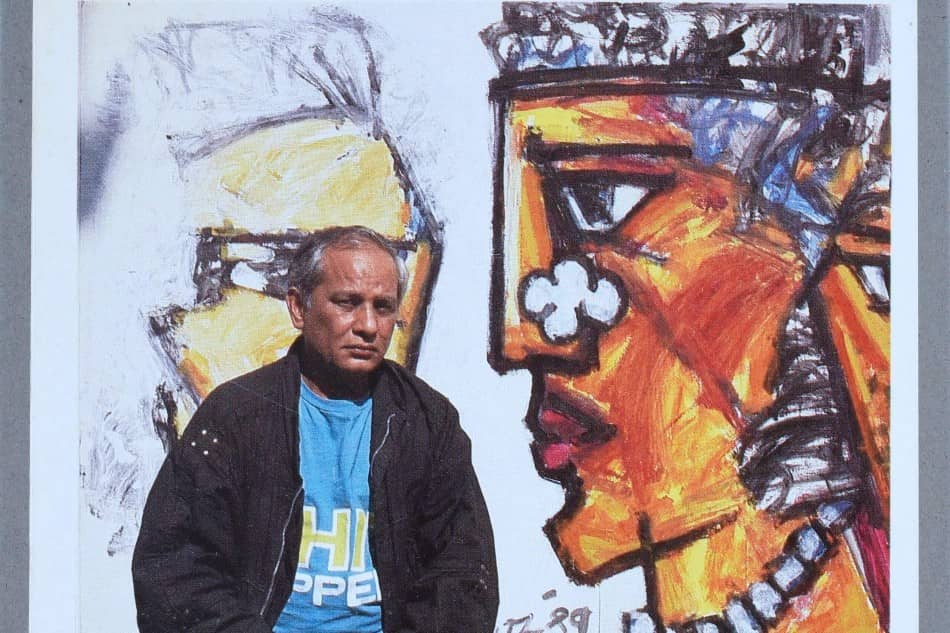
Bashir Mirza, a true trailblazer in the world of Pakistani art, left an indelible mark on the country’s cultural landscape. His fearlessness and creative spirit, paired with a relentless pursuit of innovation, set him apart as one of Pakistan’s most significant artistic figures. From the very beginning, Bashir’s journey was one filled with challenges, dreams, and unwavering dedication.
As a young boy, he was encouraged by his parents to find work, with his love for drawing steering him towards an apprenticeship with a signboard painter. This seemingly modest beginning turned into the foundation for his larger-than-life career in the arts. Enrolling at the prestigious National College of Arts (NCA) in Lahore further honed his skills, and his natural talent quickly caught the attention of his mentor, Shakir Ali. Bashir Mirza’s artistic journey began here, but it would soon take him far beyond the boundaries of the classroom.
From NCA to Fame: The Birth of a Legend
Graduating with distinction from NCA’s Department of Design in 1962, Bashir Mirza set his sights on Karachi, hoping to make a name for himself in the bustling metropolis. Little did he know that he would soon make history by opening the city’s first-ever art gallery. The gallery, located on Kutchery Road, became a cultural beacon for artists, intellectuals, and art lovers alike. It was a place where ideas were exchanged, creativity was nurtured, and the future of Pakistani art was shaped.
During this time, Bashir Mirza gained international recognition with his famed “Lonely Girl” painting series. These evocative works not only showcased his ability to capture deep emotions on canvas but also solidified his reputation on the global stage. The series was later exhibited at the Seoul Olympics and even gifted to the Seoul Olympic Art Museum. This remarkable achievement demonstrated Mirza’s versatility and depth, ensuring that his name would forever be associated with modern artistic brilliance.
The Artist with Style and Substance
Bashir Mirza wasn’t just known for his artistic prowess—he was also remembered for his impeccable personal style. Always sharply dressed, he approached life with the same precision and attention to detail that he applied to his art. His peers often described him as someone who was fully committed to his craft, dedicated to every brushstroke, and focused on pushing the boundaries of what art could be.
But Mirza’s career wasn’t just about personal accolades or global fame. He used his work to tell stories, make statements, and provoke thought. His later pieces, such as the “Save the Margallas” series, are a testament to his deep concern for environmental issues. This collection focused on the preservation of Islamabad’s iconic Margalla Hills, showing that his art was not only a means of self-expression but also a platform for advocating for important causes. Mirza believed that art had the power to inspire change, and he used his talent to shine a light on the issues closest to his heart.
A Life Dedicated to Art and Legacy
Throughout his career, Bashir Mirza’s exhibitions were nothing short of iconic. His 1963 solo exhibition at the Nigerian Embassy in Karachi marked the beginning of his professional rise, while the “Lonely Girl” series in 1971 remains one of his most celebrated bodies of work. In 1989, he hosted the “Dawn of Democracy” exhibition, once again using his art to reflect the socio-political landscape of his time.
Mirza’s works varied in size and scope, with pieces found in prestigious galleries, such as Clifton Art Gallery, in dimensions ranging from 22×28 inches to 36×48 inches. His ability to work on both large and small canvases demonstrated his mastery of composition and his deep understanding of space, light, and form. Each painting was a reflection of his personal journey, emotions, and the world around him, making them timeless pieces that continue to captivate audiences.
Honored and Remembered
In 1994, Bashir Mirza was awarded the prestigious Pride of Performance by the President of Pakistan, one of the highest civilian honors in the country. This recognition was a fitting tribute to an artist who had given so much to his country, not only through his art but also through his efforts to elevate the status of art and artists in Pakistan.
Today, Bashir Mirza’s legacy lives on through his works and the lasting impact he has had on the art world. His bold, innovative spirit continues to inspire new generations of artists, and his contributions are celebrated in galleries, museums, and private collections across the globe. At Crescent Art Gallery, his works are not just displayed; they stand as a testament to a man who redefined the boundaries of art in Pakistan and brought the nation’s creative talents to the forefront of the international stage.
Bashir Mirza may no longer be with us, but his vision, creativity, and dedication to his craft ensure that his legacy will endure for generations to come. His story is a reminder of the power of perseverance, passion, and the belief that art can change the world.




